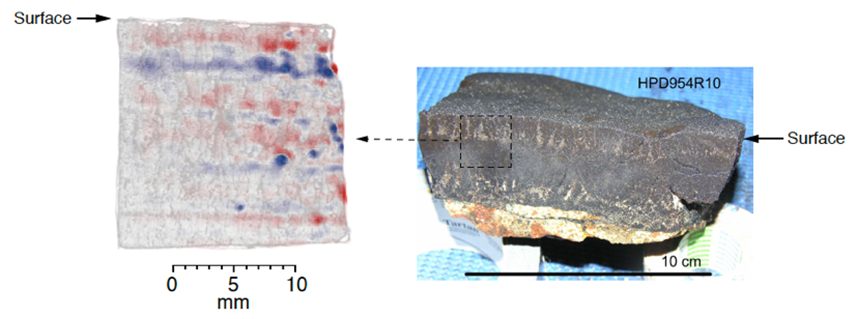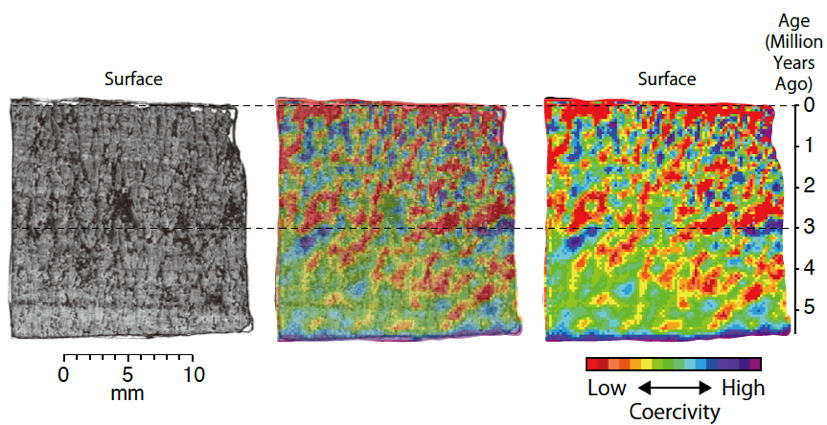Geological application of magnetic imaging through scanning SQUID microscope
- Estimates of past climate change and age using marine ferromanganese crust -
Summary of AIST Research Results on June 26, 2017
>>Japanese
Atsushi Noguchi, Hirokuni Oda, and Masahiko Sato (Paleogeodynamics Research Group), together with Kochi University and Kanazawa Institute of Technology, conducted a high resolution magnetic imaging of a marine ferromanganese crust from the northwestern Pacific at 0.1 mm resolution using a scanning SQUID microscope. The age of the crust is estimated by sub-millimeter scale magnetostratigraphy comparing the recorded magnetic stripes of alternating polarities with the established standard geomagnetic polarity timescale (Figure 1). Figure 2 shows that the magnetic coercivity increased after about 3 million years, which could have been caused by the increase of the dust transported from the Eurasian continent due to the glaciation in the northern hemisphere. The results have been published in Geophysical Research Letters on June 3, 2017.
 Fig.1 Left: Magnetic image of the ferromanganese crust thin section as seen through the SQUID microscope. Red and blue colors represent positive (out of the screen) and negative (into the screen) magnetic fields, respectively. Right: Cutting plane of the analyzed ferromanganese crust sample.
Fig.1 Left: Magnetic image of the ferromanganese crust thin section as seen through the SQUID microscope. Red and blue colors represent positive (out of the screen) and negative (into the screen) magnetic fields, respectively. Right: Cutting plane of the analyzed ferromanganese crust sample.
Fig.2 Image of magnetic coercivity related to the ratio of magnetic minerals. Left: Optical image. Right: Image of magnetic coercivity. Center: Overlaid image. The scale on the right shows the age estimated from magnetostratigraphy. Note that the area of blue patches increases after around 3 million years.
Publication details
Noguchi, A., Oda, H., Yamamoto, Y., Usui, A., Sato, M., and Kawai, J. (2017), Scanning SQUID microscopy of a ferromanganese crust from the northwestern Pacific: Submillimeter scale magnetostratigraphy as a new tool for age determination and mapping of environmental magnetic parameters, Geophys. Res. Lett., 44, 5360–5367, doi:10.1002/2017GL073201.


